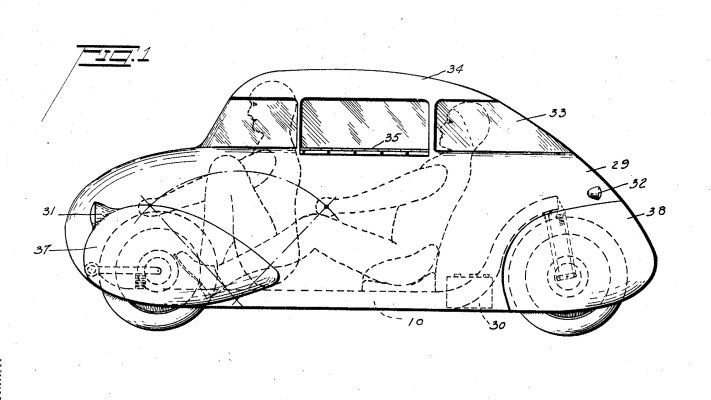Intellectual property protection is an important consideration for most startups. Obtaining intellectual property protection, such as patents, can minimize competition and act as a defensive mechanism against infringement claims from others. Intellectual property also can attract or solidify funding and partnerships. In formulating an intellectual property strategy for your startup, consider the following.
File early, and keep quiet
Your time to file for patent protection is limited and patents should be contemplated early on in development. In the United States, an inventor has a one-year “grace period” from first publicizing an invention to filing for patent protection, after which it is too late. However, you should not wait even that long. In 2013, the U.S. patent system switched from a first-to-invent to a first-inventor-to-file system. This subtle difference in terminology could mean dire consequences for those who delay seeking patent protection.
Under the old first-to-invent system, you could be the first to conceive of an invention and still obtain patent rights over an earlier filer by showing that you conceived first and continued to diligently work on your invention. Today, it is a race to the patent office. Regardless of who conceived of the invention first, the first one to file their patent application “wins.”
While patents are a valuable asset to any startup, they are only one piece of the puzzle.
Also, it is important to note that the one-year “grace period” to file a patent application is not available in most countries outside of the United States. If you plan to seek patent protection abroad, publicizing your invention at any time before filing a patent application could put your foreign intellectual property rights in jeopardy. Therefore, file early and keep quiet until you do.
File again as the invention evolves
As your startup continues to develop its product or products, consider each new feature as a possibility for patent protection. Startups that file one early patent application and stop may find that, once the patent issues, the product has moved far beyond what was in the original patent application. The product may end up being under-protected or not even covered by the patent at all.
It is important to reevaluate patent protection on a regular basis and consider filing on new features of the invention when applicable. If the product is evolving quickly, consider filing a provisional patent application or a series of provisional patent applications within a year before filing a utility patent application.
Do not wait for your patent to issue
Patents take time. While there are avenues available to expedite examination, on average it takes more than two years for a patent to be granted by the U.S. Patent Office. About 30 percent of patent applications do not make it through at all.
Having an issued patent may help to get funding for your startup and secure your place in your market. But, do not wait until your patent issues to commercialize your invention. Keep your startup moving forward and keep developing. Chances are, you will solve additional problems along the way, which may lead to even more important inventions. In the meantime, you will be building your brand, reputation and revenue.
Consider design patents
When discussing patents, the focus is often on utility patents, but design patents should also be considered as part of a well-rounded intellectual property strategy. In general, a utility patent protects the way a product is used and works, while a design patent protects the way the product looks. By the end of 2015, the U.S. Patent Office had issued more than 9.2 million utility patents, but only about 746,000 design patents.
Design patents can provide significant value as a supplement to utility patents or as a replacement when utility patent protection is unavailable. Software utility patents are still available in the United States. But, following the U.S. Supreme Court’s decision in Alice v. CLS Bank, obtaining utility patent protection for software-related inventions has become more difficult and less predictable. Design patents provide a viable option to protect certain features of software-related inventions, particularly the graphical user interfaces.
The term of a design patent is slightly less, 15 years from grant for a design patent versus 20 years from filing for a utility patent, but so is the cost. Also, design patents often can be obtained much quicker than utility patents.
Do not rely solely on patents
While patents are a valuable asset to any startup, they are only one piece of the puzzle. First and foremost, a startup needs a good product or service to be successful. The Patent Office awards patents for new and non-obvious inventions. Receiving a patent does not mean, however, that it is necessarily a good invention or one that anyone will want to buy. Make sure what you are protecting is worth protecting.
Second, build a unique brand and protect it with registered trademarks. A trademark is a word, phrase, symbol or design that identifies and distinguishes the source of the goods of one party from those of others. Having a strong and recognizable trademark can be extremely valuable for distinguishing you from the competition. And, unlike patents, a registered trademark never expires as long as you keep using it. Trademarks do not have strict filing deadlines like patents, but it is best to start early and have a trademark clearance search done to ensure that there are no conflicts that could prevent your use of the trademark.
Finally, depending on the type of business your startup is in, copyright and trade secret protection also should be considered in your intellectual property strategy. Talk to an intellectual property professional as you begin building your startup to discuss what types of intellectual property protection will work best for you.
